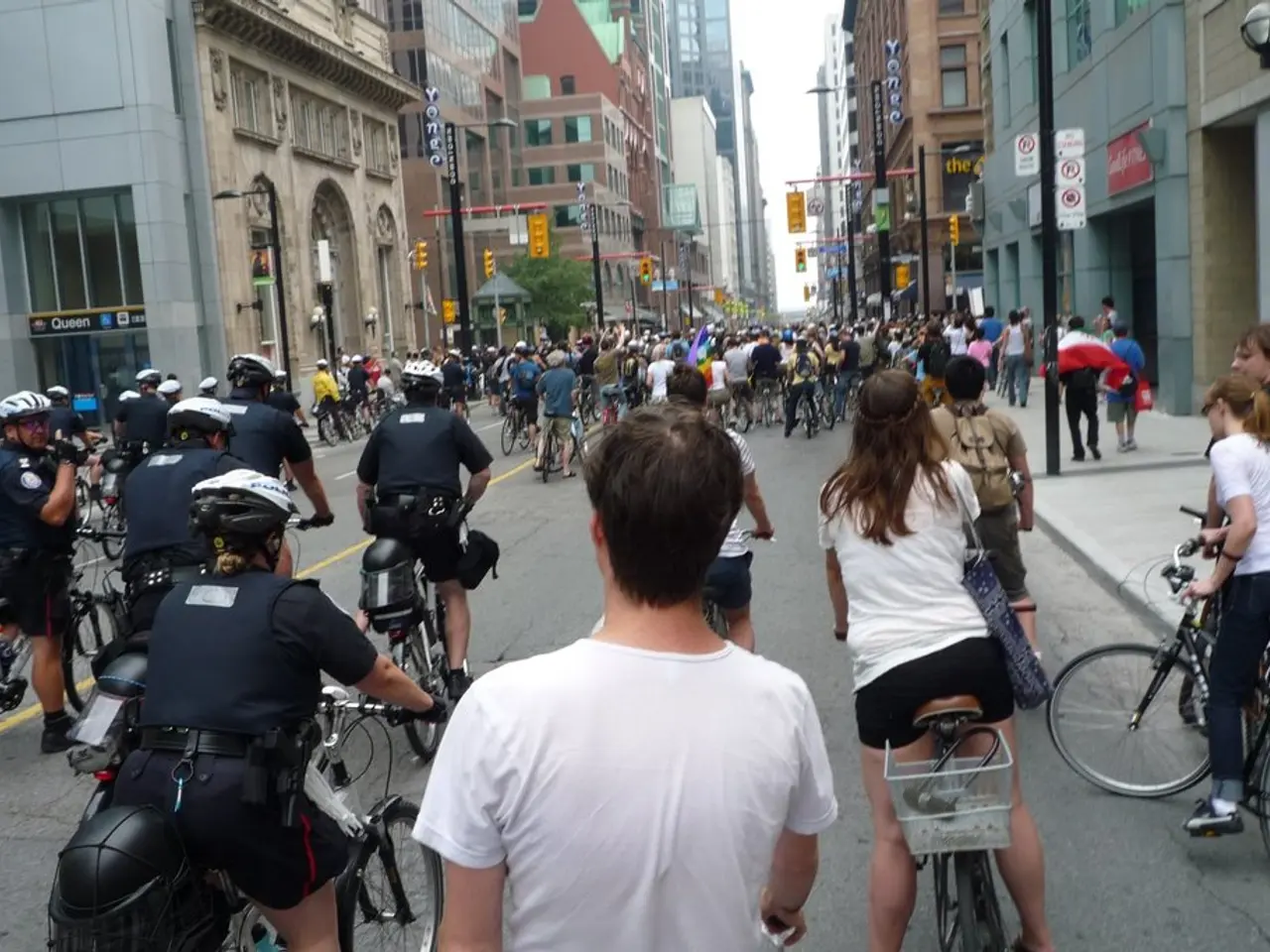A Handy Overview of Cycling Infrastructure: Cycle Highways Explained
In recent years, cities across the globe have been actively discussing the concept of cycle highways, as they seek safer, more attractive alternatives to car traffic amid urban mobility transitions. These dedicated cycling routes, often referred to as velobahns or Fietssnelweg, are not just a novelty but a potential game-changer in urban transportation.
Joris Van Damme, Cycle Highways Project Leader for Provincie Vlaams-Brabant in Belgium, and Julian, a cycle highways expert at KontextPlan in Switzerland, are among those advocating for this shift. They believe that cycle highways, with their bidirectional design and typical width of 4 meters at their widest, can offer a more efficient and enjoyable commuting experience.
While cars often lose time in congestion, cycling gains time. Shaping cycle routes to suit the environment can lead to greater enjoyment without compromising tight schedules. Joris further argues that attractive cycle highways can have a 'trickle-down' effect, encouraging people who appreciate them as tourists to consider them for daily commuting.
However, the topic of e-bikes and speed pedelecs on cycle highways is a subject of debate. While e-bikes can make cycling more democratic, making long distances achievable, there are concerns about their potential to threaten the safety and comfort of ordinary bicycles on these routes. Speed pedelec bikes can reach 45kph, and their ownership is on the rise.
Costing between €500,000 to €2 million per kilometer, cycle highways are not cheap endeavors. Yet, they are seen as a worthwhile investment in reducing congestion, emissions, and space demand in urban areas. The extent of discussions about cycle highways has varied by country, influenced by local policies, budgets, and infrastructure priorities.
Sidsel Birk Hjuler, Head of Copenhagen's Cycle Superhighways Secretariat, supports the use of the name "highway" for cycle routes. She argues that it communicates the direction clearly and may reappropriate highways from cars. Copenhagen, for instance, uses the label "super" highways to describe regional commuter routes.
Lisbon's cycle highway to Ciclovia Belém, which skirts the rivers and is speckled with trees, is an example of a cycle highway integrated into the setting. This integration is crucial in making cycle highways more appealing and less intimidating, especially in cycle-shy countries.
Sidsel also argues that cycle highways challenge the traditional way transport planners comprehend time efficiency. People look at their trip from sunrise to sunset and feel time efficient when they can squeeze in exercise, fresh air, and alone time in one day.
However, not everyone agrees that functional, direct commutes should be the only focus of cycle highway design. Some advocate for incorporating pleasure and sensory experiences into the design of these routes to make them more appealing to a wider audience.
Despite the negative connotations associated with traditional highways (noise, pollution, danger), the idea of building cycle highways is gaining traction. Even in countries with low cycling modal shares, cycle highways can start off as a weekend attraction to increase the modal share. In some cases, like Germany, there are discussions about keeping speed pedelecs on the road instead of the cycle paths.
In conclusion, cycle highways represent a significant step towards promoting sustainable urban mobility. They offer a more efficient, enjoyable, and healthier commuting experience. While they are not without their challenges, the benefits they bring make them a worthwhile investment for cities striving to create a more livable and sustainable urban environment.
Read also:
- Peptide YY (PYY): Exploring its Role in Appetite Suppression, Intestinal Health, and Cognitive Links
- Toddler Health: Rotavirus Signs, Origins, and Potential Complications
- Digestive issues and heart discomfort: Root causes and associated health conditions
- House Infernos: Deadly Hazards Surpassing the Flames








